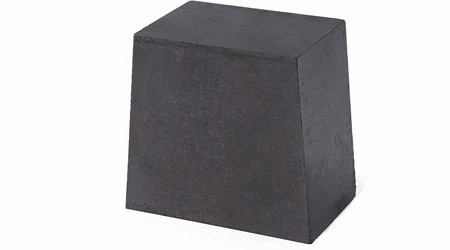PRODUCTS
Carbon Bricks
The production process of carbon bricks is roughly similar to that of other refractory bricks, but the carbon must be prevented from oxidizing at high temperatures, so the roasting of raw materials and the firing of products must be carried out in a reducing atmosphere. Anthracite must be roasted before use to eliminate volatile matter, sulfur, and moisture, and to improve the volume stability, mechanical strength, and oxidation resistance of anthracite. The coke must be dried first to avoid molding difficulties due to excessive moisture content and cracking of the product during the firing pro
Composition: Premium materials such as high alumina oxide, magnesium oxide, and silicon carbide, with customizable composition based on client requirements.
Form: Available in powder, brick, board, and castable forms to suit various application needs.
Refractoriness: Standard range from 1200°C to 1800°C, with options for higher temperature customization.
Application Fields: Widely used in industries such as steel, cement, glass, and petrochemicals for furnace lining and insulation.
Packaging: Options include 25 kg bags, bulk bags, and custom packaging solutions compliant with global transportation standards.
Introduction
Our experienced R&D team can customize the material, form, and size according to your specific application needs while ensuring compliance with international quality standards. With rigorous quality control and advanced production facilities, we guarantee products with high refractoriness, excellent compressive strength, and long-lasting durability. Whether you are in the steel, cement, glass, or petrochemical industry, we are your trusted partner, supporting the success of your projects.
For customization inquiries, please feel free to contact us. We will provide tailor-made solutions based on your requirements.
Carbon Bricks Details
The production process of carbon bricks is roughly similar to that of other refractory bricks, but the carbon must be prevented from oxidizing at high temperatures, so the roasting of raw materials and the firing of products must be carried out in a reducing atmosphere.
Anthracite must be roasted before use to eliminate volatile matter, sulfur, and moisture, and to improve the volume stability, mechanical strength, and oxidation resistance of anthracite. The coke must be dried first to avoid molding difficulties due to excessive moisture content and cracking of the product during the firing process. The asphalt must be melted and dehydrated first to make its moisture less than 0.2%, and the dehydration temperature should be 120 to 160°C.
The ingredients are roasted granular anthracite as aggregate, and its particle size depends on the size of the product: 8 to 12 mm for large bricks and 4 to 6 mm for small bricks. The amount of anthracite added is about 60%.
Features
1. High refractoriness and load softening temperature, good thermal shock resistance
2.Not wetted by molten slag, molten iron, etc., and almost not corroded by all acids, alkalis, salts and organic chemicals
3.Good slag resistance, stable volume at high temperatures
4.High mechanical strength and good wear resistance
5.Has good electrical and thermal conductivity
Physical And Chemical Indicator
|
Type |
long |
wide |
thick |
|
STZ-1 |
230 |
113 |
65 |
|
STZ-2 |
230 |
113 |
40 |
|
STZ-3 |
230 |
113 |
30 |
Application
1.Carbon bricks are widely used in the metallurgical industry. Among them, the largest amount of carbon bricks is used in blast furnaces. The bottoms and hearths of many blast furnaces are built with carbon bricks.
2.They are also used in aluminum electrolysers.
3.In addition, carbon bricks are also widely used in electrochemical industry, chemical industry, petrochemical industry, electroplating industry, ferroalloy industrial furnaces (or linings of equipment), acid and alkali tank linings and pipelines, and smelting non-ferrous metals (such as Aluminum, lead, tin, etc.) furnace lining.













